Introducing Sociolinguistics
This second edition of Miriam Meyerhoffs highly successful textbook is supported by The Routledge Sociolinguistics Reader and online resources common to both books. It provides a solid, up-to-date appreciation of the interdisciplinary nature of the field covering foundation issues, recent advances and current debates. It presents familiar or classic data in new ways, and supplements the familiar with fresh examples from a wide range of languages and social settings. It clearly explains the patterns and systems that underlie language variation in use, as well as the ways in which alternations between different language varieties index personal style, social power and national identity.
New features of the second edition:
 A wider range of approaches to politeness theory incorporating an international range of research
A wider range of approaches to politeness theory incorporating an international range of research
 Expanded sections on multilingualism and code-switching, social class, dialect contact and tracking change over time
Expanded sections on multilingualism and code-switching, social class, dialect contact and tracking change over time
 Linkage to the new Routledge Sociolinguistics Reader
Linkage to the new Routledge Sociolinguistics Reader
 A shared website serving both Reader and Textbook which includes web- and videolinks, interactive exercises and an expanded online glossary at www.routledge.com/textbooks/meyerhoff
A shared website serving both Reader and Textbook which includes web- and videolinks, interactive exercises and an expanded online glossary at www.routledge.com/textbooks/meyerhoff
 A refreshed text design to assist navigation through Textbook and Reader
A refreshed text design to assist navigation through Textbook and Reader
Chapters include exercises that enable readers to engage critically with the text, break-out boxes making connections between sociolinguistics and linguistic or social theory, and brief, lively add-ons guaranteed to make the book a memorable and enjoyable read. With a full glossary of terms and suggestions for further reading, this text gives students all the tools they need for an excellent command of sociolinguistics.
Miriam Meyerhoff has taught sociolinguistics in places as diverse as New Zealand, Hawaii, the mainland United States, Vanuatu and Scotland. She has consulted on sociolinguistic issues for the print and broadcast media and published books and articles on language variation, language and gender, and language contact. She is currently Professor of Sociolinguistics at the University of Auckland, New Zealand.
PRAISE FOR THE FIRST EDITION
Here is a welcome introduction to sociolinguistics by a leading researcher in the field. Users will be inspired by the breadth and sweep of Meyerhoffs treatment.
William Labov, University of Pennsylvania, USA
Miriam Meyerhoffs entertaining volume revels in the diversity that is the cornerstone of sociolinguistics she takes us to every continent to provide contemporary, refreshing and engaging examples of the key concepts of the discipline, and does so in a well-paced and readable style. The book is authoritative yet open-minded, innovative yet touches all the bases that need to be touched. Most of all, it embodies a passion for sociolinguistics that I hope many readers will embrace.
David Britain, University of Bern, Switzerland
A great book... easy to read and by far the most accessible introductory text for sociolinguistics
Nanna Haug Hilton, Centre for Language and Cognition,University of Groningen, the Netherlands
Although the audience of this textbook... is primarily meant to be undergraduates, the exercises are so rich with stimulating ideas that students can develop these into theses... Another merit of the book is its coverage of the most recent advances in the field and their connections with theory.
Dinha T. Gorgis, Jadara University, Jordan
I especially liked the way it includes studies from all over the world not just from English-speaking countries... the author presents complex studies in a very clear manner without simplifying too much.
Hanne Pernille Anderson, Copenhagen University, Denmark
Introducing Sociolinguistics
Second edition
Miriam Meyerhoff

First published 2006
This second edition first published 2011
by Routledge
2 Park Square, Milton Park, Abingdon, Oxon OX14 4RN
Simultaneously published in the USA and Canada by Routledge
270 Madison Ave, New York, NY 10016
Reprinted 2009 (four times), 2010 (twice)
Routledge is an imprint of the Taylor & Francis Group, an informa business
2011 Miriam Meyerhoff
The right of Miriam Meyerhoff to be identified as author of this work has been asserted by her in accordance with sections 77 and 78 of the Copyright, Designs and Patents Act 1988.
All rights reserved. No part of this book may be reprinted or reproduced or utilised in any form or by any electronic, mechanical, or other means, now known or hereafter invented, including photocopying and recording, or in any information storage or retrieval system, without permission in writing from the publishers.
British Library Cataloguing in Publication Data
A catalogue record for this book is available from the British Library
Library of Congress Cataloging-in-Publication Data
Meyerhoff, Miriam.
Introducing sociolinguistics / Miriam Meyerhoff. 2nd ed.
p. cm.
Includes bibliographical references and index.
1. Sociolinguistics. I. Title.
P40.M498 2011
306.44dc22 2010037856
ISBN: 9780415550055 (hbk)
ISBN: 9780415550062 (pbk)
ISBN: 9780203874196 (ebk)
For Gillian and Janet
because apples dont fall far from the tree
FIGURES
TABLES
SOUNDS AND SYMBOLS USED IN THE TEXT
The symbols that are used to represent speech sounds in this text are generally the symbols used in the IPA (International Phonetic Alphabet). The main vowel symbols used in this text are shown in the vowel chart over. The main consonant symbols are as follows:
Symbol | Example |
p | pen |
b | bit |
t | tell |
d | die |
k | c a k e |
g | goat |
[glottal stop, replaces final stops in many varieties of English, e.g. hat as [h] |
t | ch ur ch |
d | j u dg e |
f | fan |
v | view |
th irteen th |
th en |
s | sick |
z | zoo |
sh ip |
mea s ure |
h | hat |
m | moon |
n | nine |
si ng |
l | love |
r | run |
j | y ellow |
w | wine |

Sometimes the text uses the keywords from Wellss (1982) lexical sets to identify sounds in English. Wellss lexical sets are quite useful for identifying sounds across varieties of English. They were chosen so as to be able to refer concisely to groups of words that generally share the same vowel in varieties of southern British English and what is known as General American. The phonetic realisation of the vowel may be rather different in Received Pronunciation (RP) and General American (GenAm), but the set of words identified by the keyword generally will be the same. A list of Wellss keywords and the phonetic realisation of the vowel in those words in RP and GenAm follows:
Next page
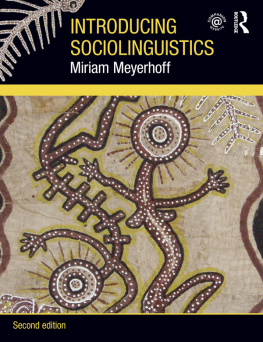


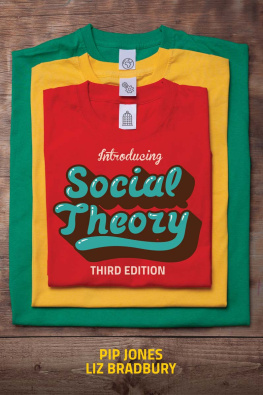
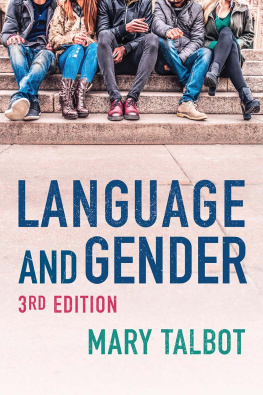
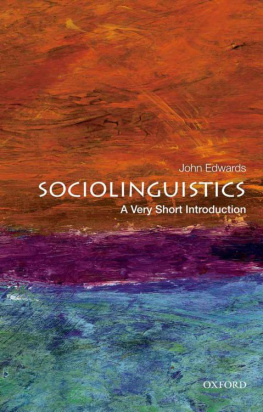
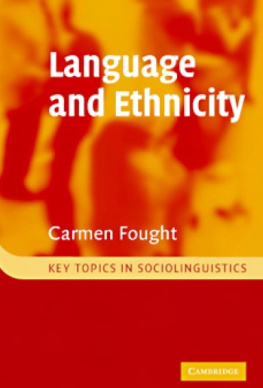
 A wider range of approaches to politeness theory incorporating an international range of research
A wider range of approaches to politeness theory incorporating an international range of research
